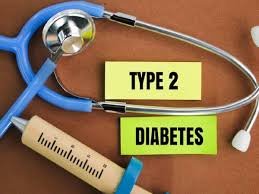#I. Introduction:
“Discover the path to mastering Type 2 Diabetes through the dynamic interplay of lifestyle and medication. Our guide empowers you to take control of your health and embark on a powerful journey towards better well-being.”
- Type 2 diabetes is a condition that happens because of a problem in the way the body regulates and uses sugar as a fuel.
- That sugar also is called glucose. This long-term condition results in too much sugar circulating in the blood


#II. Understanding Type 2 Diabetes:
- Purpose: This section provides essential information about Type 2 diabetes and its causes.
- Explanation: You’ll delve into the mechanics of Type 2 diabetes, explaining how it affects the body and what causes it.
- Risk Factors: Discuss the common risk factors for developing Type 2 diabetes, such as genetics, lifestyle choices, and obesity.
- Example: Explain insulin resistance and how it leads to elevated blood sugar levels, and then mention the risk factors, saying, “Type 2 diabetes, characterized by insulin resistance, often results from a combination of genetic factors and lifestyle choices.”
#III. Lifestyle Changes for Managing Type 2 Diabetes:
- Purpose: This section outlines the crucial role of lifestyle changes in managing Type 2 diabetes.
- Diet: Discuss the importance of dietary changes, like balanced meals, portion control, and monitoring carbohydrate intake.
- Exercise: Emphasize the significance of regular physical activity in controlling blood sugar levels and provide practical tips for integrating movement into daily routines.
- Stress and Sleep: Stress the importance of stress management techniques and adequate sleep in diabetes management.
- Example: When discussing dietary changes, you can say, “Balanced meals focusing on whole grains, vegetables, and lean proteins can help stabilize blood sugar levels. Portion control and monitoring carbohydrate intake are key strategies.”
#IV. Medication for Type 2 Diabetes:
- Purpose: In this section, you introduce the role of medication in managing Type 2 diabetes.
- Common Medications: Explain commonly prescribed medications for Type 2 diabetes, such as Metformin, Sulfonylureas, Insulin, and GLP-1 receptor agonists.
- Prescription Criteria: Describe when these medications are typically prescribed and their roles in diabetes management.
- Side Effects: Discuss potential side effects and the importance of close monitoring and communication with healthcare professionals.
- Example: When talking about Metformin, you might say, “Metformin is one of the most commonly prescribed medications for Type 2 diabetes. It helps lower blood sugar levels by improving insulin sensitivity and reducing the liver’s glucose production.”
#V. Balancing Lifestyle and Medication:
- Purpose: This section stresses the importance of balancing lifestyle changes and medication.
- Healthcare Team: Encourage individuals to work closely with their healthcare team, which may include doctors, dietitians, and diabetes educators.
- Communication: Offer tips on effective communication with healthcare providers, like preparing appointment questions and keeping a diabetes journal.
- Success Stories: Share personal or success stories of individuals who effectively manage their Type 2 diabetes, providing motivation and inspiration.
- Example: You can say, “Working closely with your healthcare team ensures you’re on the right track. Communication is key. Prepare questions for your doctor visits, and consider keeping a diabetes journal to track your progress.”
#VI. Tips for a Balanced and Healthy Life:
- Purpose: Provide practical tips for maintaining a balanced and healthy lifestyle while managing Type 2 diabetes.
- Meal Planning: Discuss meal planning and monitoring blood sugar levels.
- Staying Active: Emphasize the importance of regular exercise and suggest ways to incorporate it into daily life.
- Stress Reduction: Stress the importance of managing stress through relaxation techniques.
- Example: When discussing staying active, you can say, “Regular physical activity is a cornerstone of diabetes management. Aim for at least 150 minutes of moderate-intensity exercise each week, like brisk walking, swimming, or dancing.”
#VII. Conclusion:
- Purpose: Summarize key points and takeaways from the blog.
- Encouragement: Reiterate that it’s possible to lead a fulfilling life with Type 2 diabetes through proper management.
- Action: Encourage readers to consult healthcare professionals for personalized advice and to take control of their health.
- Example: Conclude by saying, “In summary, Type 2 diabetes can be managed effectively through lifestyle changes and, if needed, medication. Remember, you’re not alone in this journey. Your healthcare team is here to support you every step of the way.”
#VIII. Additional Resources:
- Purpose: Provide readers with other resources for further information and support.
- Examples: Include links to diabetes associations, online support groups, reputable websites, and books on diabetes management.
- Example: You can provide links like, “For more information and support, consider visiting the American Diabetes Association’s website or joining the ‘Living with Type 2 Diabetes’ online support group.”
This detailed breakdown gives you a solid framework for your blog on managing Type 2 diabetes. You can now expand on each section to create an engaging and informative piece that resonates with your audience.
